
Unlocking the Benefits of Fermented Chicken Feed for your Backyard Flock
Backyard chicken keepers and hatcheries alike are shouting the positive results and plethora of benefits that fermented chicken feed brings to their flock. Discover how to make fermented poultry feed and all the benefits, including the cost-savings bonus that makes this such an appealing feeding method to chicken owners.
The fermentation process takes approximately three days to break down the ingredients and release the health benefits your chickens need to thrive.
Subscribe
To join our mailing list and never miss an update!
In the realm of poultry farming, innovation continually seeks to redefine standards for efficiency, productivity, and animal welfare. Among the latest advancements gaining traction is the practice of feeding chickens with fermented feed. This approach, harnessing the power of microbial transformation, introduces a host of benefits for both the chickens themselves and the farmers who tend to them.
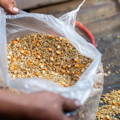
FERMENTED CHICKEN FEED INGREDIENTS
The ingredients used in fermented chicken feed can vary depending on factors such as the nutritional requirements of the chickens, availability of ingredients, and specific goals of the farmer. However, common ingredients often include:
1. Grains: Grains such as corn, wheat, barley, oats, and sorghum are commonly used as the primary energy source in chicken feed.
2. Protein Sources: Ingredients rich in protein are essential for the growth and development of chickens. Common protein sources include soybean meal, fish meal, canola meal, sunflower meal, and dried distillers grains.
3. Oilseeds: Oilseeds like sunflower seeds, flaxseeds, and sesame seeds can provide additional protein and fat to the feed.
4. Legumes: Legumes such as peas, lentils, and chickpeas are valuable sources of protein and other nutrients.
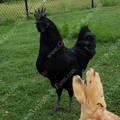
5. Forages: Fresh or dried forages such as alfalfa, clover, and grasses may be included to add fiber and nutrients to the feed.
6. Minerals and Vitamins: Mineral supplements such as calcium, phosphorus, salt, and trace minerals, as well as vitamin supplements, are often added to ensure the feed meets the nutritional requirements of chickens.
7. Probiotics: Some farmers may choose to add probiotics or fermentation starters containing beneficial bacteria to initiate the fermentation process and promote gut health in chickens.
8. Water: Water is a crucial component of the fermentation process, as it helps create the anaerobic conditions necessary for fermentation to occur.
These ingredients are typically mixed together in appropriate proportions and then soaked in water to initiate the fermentation process. The specific formulation of fermented chicken feed may vary depending on factors such as the age and nutritional needs of the chickens, as well as the preferences and objectives of the farmer. Additionally, some farmers may include by-products or locally available ingredients in their feed formulations to reduce costs and improve sustainability.
BENEFITS OF FERMENTED CHICKEN FEED
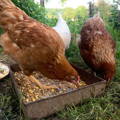
Trending Articles
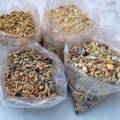
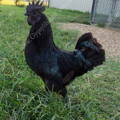
9. Lower pH Levels: The fermentation process typically lowers the pH of the feed, creating an acidic environment. This acidity can inhibit the growth of harmful bacteria such as Salmonella and E. coli, potentially reducing the risk of foodborne illnesses in chickens and improving food safety.
10. Increased Water Content: During fermentation, water is added to the feed, increasing its moisture content. This can be advantageous, especially in hot climates or during periods of heat stress, as it helps to keep chickens hydrated.
11. Cost-Effective: While the initial setup for fermenting feed may require some investment, such as fermentation vessels or containers, fermenting feed can potentially be a cost-effective option in the long run. This is because it can utilize ingredients that might otherwise be considered waste or lower-quality, reducing feed costs.
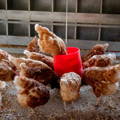
12. Environmental Benefits: Fermenting feed can be part of a sustainable farming approach. It can help reduce the environmental impact of poultry farming by minimizing waste, conserving water, and promoting healthier soil through the disposal of fermented feed residues.
13. Customizable Nutrient Profiles: Farmers can adjust the ingredients and duration of fermentation to tailor the nutrient profile of the feed to meet the specific needs of their chickens at different stages of growth or production. This flexibility allows for optimization of feed formulations based on factors such as age, breed, and desired performance outcomes.
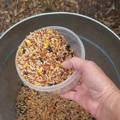
HOW TO FERMENT CHICKEN FEED
1. In a 5-gallon bucket, combine the dry ingredients that want to include in your fermentation recipe. Only fill your fermentation container 1/3 full with the dry ingredients. To start simply, you can even ferment regular, dry chicken feed.
2. Cover the feed with water to about 3 inches above the feed ingredients. Any feed that is not covered by water will grow mold and ruin your feed batch. If available, use filtered water to avoid any chlorine, fluoride or other treatments that are in your city water. If not, it’s still OK to use regular tap water.
3. Leave at least the top 1/3 of your fermentation vessel empty. The fermentation process will create bubbles and your feed will expand. If you don’t leave enough clearance at the top, it will bubble over and out of the bucket to create a mess.

4. Stir your fermenting feed mixture twice a day, making sure that all is covered with water when you have completed the process.
5. Add water as necessary. Much like rice, the feed will absorb the water and expand as it ferments.
6. Continue this process for at least three days as the fermentation process works its’ magic. Do not over-ferment your feed.
7. You can set up a three vessel system, each one a day apart, so that one batch is ready to feed your flock every day.
Overall, fermented chicken feed can be a valuable addition to poultry farming operations, offering numerous benefits for both the chickens and the farmer. However, it's essential to follow proper fermentation techniques and hygiene practices to ensure the safety and quality of the feed.
Trending Products
Copyright©2024 All rights reserved. We love to have you share our article as long as you include a direct link to this page. This article or any portion thereof , including all images, may not be reproduced or used in any manner whatsoever without the express written permission of Gypsy Shoals Farm.



